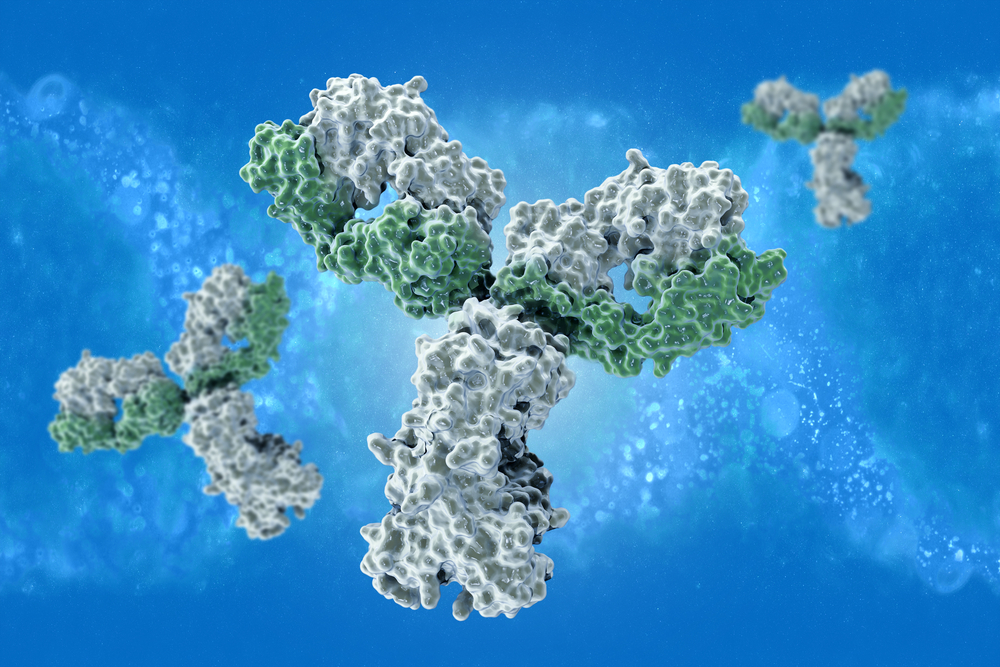MOUSE ANTI-ENTEROVIRUS 71 VP1 (3657)
Mouse anti Enterovirus 71 VP1 (3657) antibody is specific for EV71 VP1 and has been developed for use in ELISA and immunofluorescence. These antibodies meet the need for highly reactive and specific EV71 monoclonal antibodies for the development of serological assays.
PRODUCT DETAILS – MOUSE ANTI-ENTEROVIRUS 71 VP1 ANTIBODY (3657)
- Mouse anti Enterovirus 71 VP1 (3657). Specific for the VP1 of Enterovirus type 71. Does not cross react with related viruses including Coxsackie A9, Coxsackie B2, ECHO 30, EV70 and Polio, type 2.
- Purified preparations consist of >90% pure mouse monoclonal antibody purified from ascites fluid or culture medium by protein A chromatography or sequential differential precipitations.
- Presented in PBS pH7.2 with 0.1% sodium azide.
- For use in ELISA and immunofluorescence.
- Can be used with Goat anti mouse IgG HRP and PanBlock ELISA Blocking Buffer.
BACKGROUND
Enteroviruses (EV) are single-stranded RNA viruses belonging to the Picornaviridae family and are the smallest, non-enveloped viruses known to infect both humans and animals. More than 100 human enterovirus types have been described and they were originally classified into four groups: polioviruses, coxsackievirus A, coxsackievirus B and echoviruses and a group of Enterovirus marked according to their serotype number (66 – 71 and newly identified 73 – 75, 77, 78). This was based largely on physical structure of the virus particles, cell or tissue culture growth capabilities, and pathogenesis in humans and other animals. This classification system has now been replaced by one based on virus genomic properties. In 2003, the International Committee on Taxonomy of Viruses created a new taxonomy classification. EV was divided into 5 groups of species based on their molecular properties (HEV-A, HEV-B, HEV-C, HEV-D and poliovirus). Virus serotypes still use their original names given before the current reclassification was adopted, for example, coxsackievirus A9, coxsackievirus B4, echovirus 6, and EV-69 are all members of species Enterovirus B.
EV cause a wide variety of diseases, and it is known that non-polio enteroviruses are the most common cause of aseptic meningitis in adults as well as children. EV are responsible for approximately a quarter of adult aseptic meningitis cases with an identified causative agent. Individual EV serotypes are not exclusively associated with particular disease syndromes, but sometimes have a propensity to cause particular symptoms. Echovirus serotypes are frequently reported to be responsible for meningitis, but also are responsible for most enterovirus infections. Among coxsackieviruses, the leading serotypes associated with central nervous system diseases are B1 to B6, A7 and A9.
Enterovirus 71 (EV71) has been identified as one of the main causative agents responsible for large outbreaks of hand, foot, and mouth disease (HFMD) across the Asia-Pacific region. Other members of the genus Enterovirus cause HFMD, including coxsackieviruses A16, A6, A5, A7, A9, A10, B2, and B5, but EV71 is linked to severe complications, including brainstem encephalitis, aseptic meningitis, and pulmonary edema (Caine et al., 2016). As yet, no effective EV-specific antiviral treatments are available, and vaccines are available only against polioviruses. Ongoing experience with EV71 outbreaks in the Asia-Pacific region has demonstrated that co-infections with other EV and indeed viruses belonging to other families, is common and raises the possibility that some co-infections can increase the severity of disease and change the clinical presentation. A domain has been identified on the EV71 capsid VP1 which is critical for receptor attachment and necessary for the stability of infectious virions. It includes a group of positively charged amino acids near the 5-fold vertices of the protein. EV71 receptors are believed to increase the ability of the virus to become neurotropic and so increase the severity of the disease it causes (Caine et al., 2016). This domain offers a promising target for the development of neutralising antibodies and anti-viral drugs.
REFERENCES
- Enterovirus surveillance guidelines. Guidelines for enterovirus surveillance in support of the Polio Eradication Initiative. World Health Organization 2015.
- Jia et al. (2017). Effective in vivo therapeutic IgG antibody against VP3 of enterovirus 71 with receptor-competing activity. Sci Rep. 7:46402.
- Wells, AI and Coyne, CB (2019). Enteroviruses: A Gut-Wrenching Game of Entry, Detection, and Evasion. Viruses 2019, 11(5), 460.
- Caine et al. (2016). A Single Mutation in the VP1 of Enterovirus 71 Is Responsible for Increased Virulence and Neurotropism in Adult Interferon-Deficient Mice. J Virol. 90(19):8592-604.
- Muehlenbachs et al. (2015). Tissue tropism, pathology and pathogenesis of enterovirus infection. J Pathol. 235(2):217-28.
- Factsheet about enteroviruses. European Centre for Disease Prevention and Control (ECDC), 2010.

